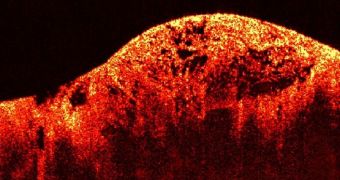Scientists with the University of Illinois at Urbana-Champaign (UIUC) say that they have developed a new computational technique for correcting the aberrations inherent in a medical imaging technology called optical tomography.
This means that imaging may soon become a three-dimensional, real-time process, capable of providing healthcare professionals with more data on diseased cells and tissues than ever before.
Having access to this type of capability could improve cancer diagnosis, surgeries that are only minimally invasive and ophthalmology check-ups. This could, in turn, translate into diseases being discovered earlier than currently possible, and therefore addressed faster.
Using the UIUC computational technique, tissue imaging will become faster, cheaper, and of much higher resolution than today. A paper describing the approach is published in the latest issue of the esteemed journal Proceedings of the National Academy of Sciences (PNAS), Science Blog reports.
“Computational techniques allow you to go beyond what the optical system can do alone, to ultimately get the best quality images and three-dimensional datasets. This would be very useful for real-time imaging applications such as image-guided surgery,” expert Steven Adie explains.
The investigator holds an appointment as a postdoctoral researcher at the UIUC Beckman Institute for Advanced Science and Technology. He adds that distortions and astigmatism currently reduce the overall quality of high-resolution medical imaging.
But these imaging methods are used precisely because doctors want to obtain an accurate image of what's going on inside tissues. If the images are blurry, then diagnostics cannot be placed correctly, with potentially fatal consequences for the patients.
UIUC investigators turned to a technique used in astronomy to address a similar issue. Called adaptive optics, the method is used to compensate for the distortions introduced in astronomical images by the influence of our planet's atmosphere.
“It’s the same challenge, but instead of imaging through the atmosphere, we’re imaging through tissue, and instead of imaging a star, we’re imaging a cell. But a lot of the optical problems are the same,” explains UIUC expert Stephen Boppart.
He holds an appointment as a professor of electrical and computer engineering, of bioengineering and of internal medicine at UIUC. The expert says that the US National Institutes of Health (NIH) and the National Science Foundation (NSF) provided the funds needed for this research.

 14 DAY TRIAL //
14 DAY TRIAL //